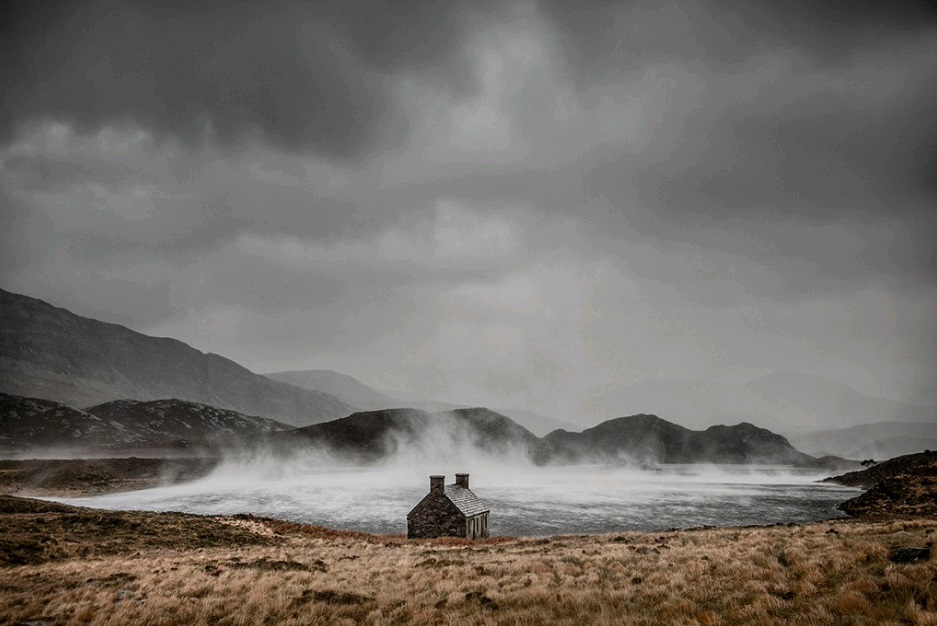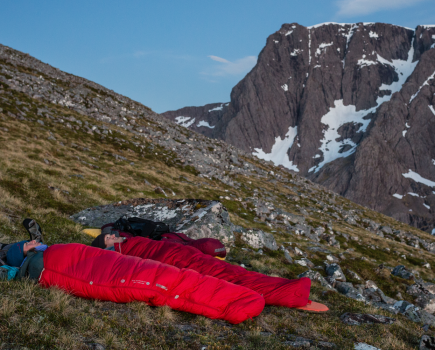Award-winning landscape photographer Dougie Cunningham, the man behind many of our magazine’s cover shots, explains how to choose the perfect camera for capturing mountain memories. It’s more about the feel than the features he says…
Never before has there been such a huge variety of cameras available and accessible to the casual photographer. In choosing your camera, think about your priorities: is the ability to slip it into a pocket essential, or are you willing to carry a little more for greater quality? Are you willing to pay the extra for built-in GPS to automatically geotag your pictures? Are you a fair weather walker, or do you want a camera that isn’t going to fail at the first sign of rain? Point and click, or do you want full creative control?
Don’t worry too much about how long the zoom is, or at all about how many pixels it boasts. How the camera feels in your hand is more important than minor technical differences: if you enjoy using your camera, you’ll take better photographs (wearable cameras like the GoPro or Garmin Virb are stunning for video, but less suited to stills photography). Take the time to visit a shop and try a few out.
Compact cameras
At the basic end of the scale, ultra-compact cameras like the Canon IXUS 170 or the Nikon S3700 are exceptionally convenient and lightweight and a small step up from phone cameras. Slightly bulkier, fully waterproof, shockproof cameras like the Panasonic Lumix DMC-TS6 or the Olympus Stylus TG-3 will stand up to the worst of mountain conditions.
However, if image quality is more important than keeping the cost and size to a minimum then consider the slightly larger enthusiast compacts like the Sony RX100M3, Canon G1X mark II or the Fujifilm X30, each offering full manual controls.
System Cameras
Mirrorless systems are more of an investment. Similar to traditional SLRs in that you can attach a range of different lenses to the camera, you have the versatility to put together a system that suits your needs. Image quality is generally excellent, and the cameras and lenses are smaller than their SLR counterparts.The Fujifilm system is superb, the retro styling belying very impressive technology. Their X-A2 with the 16-50mm lens is an excellent package to get started with.The Olympus OM-D EM5ii is more expensive, but provides excellent quality, is weather sealed and very rugged.
Digital SLRs
Direct descendants of film SLRs, an entry-level DSLR is larger but cheaper than the system cameras above. Their main advantage is the ability to keep adding to your equipment in time – perfect if you think this is the start of a long-term affair with photography. The Canon 1200D or the Nikon D3300 are good options to get started: from there, the sky’s the limit.
RELATED: Is iPhone photography any good? This guy thinks so…
Carrying your camera
Keeping your camera accessible is key: if you have to stop and remove your rucksack every time you want to take a photograph you will miss opportunities. Smaller compact cameras may fit neatly inside a pocket, but this can be uncomfortable with larger compacts.
There are countless pouches for digital cameras available that can be attached to the hipbelt of your pack. Alternatively, sling systems like the Black Rapid or Sun Sniper allow you to carry a larger camera by your hip when not in use, yet easily swing it into a shooting position even with a rucksack over the strap. These are excellent on easy ground but on steep or uneven terrain it can feel like the camera is swinging around.
Holster systems are an excellent option for larger cameras. The Spider Black Widow is a good choice for carrying on a hipbelt, while the Peak Design Capture Pro is a surprisingly comfortable and ergonomic system that attaches your camera to the shoulder strap of your pack. The only disadvantage to holsters is that the camera is exposed to the elements and when not locked in the holster it is no longer physically attached to you: don’t drop it!

Dougie’s shot of Loch Stack in Sutherland won Classic view 2016 in the Take a View – Landscape photographer of the Year Awards.
Stabilisation
As you start making more of a positive effort to take the best photographs that you can, other equipment starts to make itself invaluable. A tripod is essential for those serious about landscape photography. Image Stabilisation technology is good, but not a substitute for locking the camera in position for longer exposures. Your choice in tripod will always be a compromise between stability, weight and cost. Lightweight carbon fibre models are excellent for use in the mountains but as with any outdoor kit, the saving in weight comes with a higher price-tag.
Essential equipment
There are a few essentials that no outdoor photographer should leave the car without. A spare battery should go without saying, even if the battery in the camera is fully charged when you start. It is also smart to carry at least one spare memory card, regardless of how large the one in the camera is: memory cards do occasionally fail (especially cheaper brands). Also carry a soft lens cloth. It is inevitable that you will get spots of rain on the front of your lens at some point, and without an appropriate cloth, that will smear your lens when it dries. A small lightweight drybag that you can put the camera in provides peace of mind when the weather takes a really bad turn for the worse. If you are using a system or DSLR camera, consider fitting a UV filter to the front of each lens – it is much cheaper to replace a filter than the lens if you bash it against something.
Visit leadinglines.net for details on Dougie’s photography workshops.







